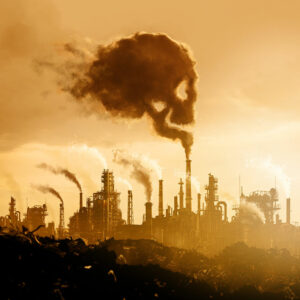The real action against methane emissions is at OPEC

WHAT sort of climate deal is a summit hosted by the world’s third-largest net oil exporter most likely to pull off? The type that boosts revenues for petroleum companies.
It sounds like a bad joke. Still, the Oil and Gas Decarbonization Charter unveiled at the United Nations COP28 summit in Dubai at the weekend counts as one of the most substantive pacts to have emerged from the conference so far.
The agreement includes most of the traditional Western oil majors, along with state producers from Saudi Arabia and hosts the United Arab Emirates, between them accounting for about 40% of global oil output. The most important bit is a promise to crack down on the millions of tons of methane that are pumped into the atmosphere through leaks at oil- and gas-fields and flares burning off surplus gas.
Campaigners will rightly complain that the pledges are unenforceable, making the deal little better than a pinky promise. A similar vow to end routine flaring of gas was agreed nearly a decade ago at COP21 in Paris, and there’s precious little evidence it’s going to meet its targets.
The Global Methane Pledge formed one of the centerpieces of the Glasgow COP26 conference two years ago. Roughly a quarter of the warming to date has been caused by methane. Over the coming century each ton of CH4 emitted will heat the atmosphere as much as 28 tons of CO2.
Petroleum producers should be highly motivated to do something about the problem. Natural gas — which is almost entirely methane — is still running at elevated prices, with European futures for the 2024-2025 winter peak season at more than double the level they were at three years ago.
Capturing that valuable commodity and selling it, instead of venting it or burning it as waste gas, should be extremely profitable: About 41% of methane emissions from oil and gas facilities can be eliminated at no net cost, according to the International Energy Agency (IEA).
There’s an even more cynical reason for fossil-fuel producers to get on board. Since the warming impact of CH4 is so front-loaded, a quicker reduction in methane emissions might eke out a few more years to sell down those petroleum reserves before the chaos of climate change forces tougher action.
The main issue is that the easiest way to tackle this is to go to the root of the problem, and cut petroleum production as a whole. Oil companies aren’t stupid: If they are throwing away CH4 as waste gas, it’s very often because capturing it and selling it is a lot harder to do in practice than it is on paper.
If you’re managing an oilfield, a pipeline, or a storage tank, you don’t always have good alternatives to releasing methane into the atmosphere. A large share of pollution comes from blowdowns — deliberate releases, often in emergency situations, to prevent buildups of gas that may make equipment inoperable or dangerous. Burning this gas off in a flare is cheaper and easier than installing all the infrastructure needed to capture and sell it, but even then about 9% of the CH4 coming out of the pipe doesn’t set alight and gets released in its raw form.
Since the mid-1980s, attempts to reduce the share of flaring in global petroleum production have shown only limited effectiveness. Much of the success of late has likely been a result of the US, a country with an unusually comprehensive gas collection and distribution network, increasing its share of the global oil market.
Even a complete elimination of petroleum’s methane emissions won’t make much of a difference unless the rest of the industry cuts back. CH4 from oil and gas facilities released the equivalent of 2.3 billion tons of CO2 into the atmosphere in 2022, according to the IEA. Reduce that by an extremely ambitious two-thirds by 2030, and you still won’t have cut emissions enough to offset the 1.8 billion tons of additional CO2 that would be produced if the Organization of the Petroleum Exporting Countries’ (OPEC) forecast for oil output over the period plays out.
The more effective action against the oil and gas industry’s carbon footprint, in fact, may be happening closer to OPEC’s headquarters in Vienna than the COP28 talking shop in Dubai. The crude oil cartel’s supply cuts of 2.2 million daily barrels announced last week, if they’re not offset by increases elsewhere, will cut CO2 emissions by about 347 million metric tons, equivalent to about 1% of the annual total.
OPEC would argue that those cuts are temporary. If, however, they are the first signs of a peak and decline in petroleum production, that’s the real action the world needs — and it’s not being done out of altruism.
Ultimately, an Oil and Gas Decarbonization Charter is an oxymoron, because the carbon is locked into the chemical structures of oil and gas molecules themselves. The only viable way to tackle that is to stop burning fossil fuels. It’s the looming decline in oil and gas production itself, rather than any attempt to make the industry’s operations more efficient, that will make the real difference to the planet.
BLOOMBERG OPINION




